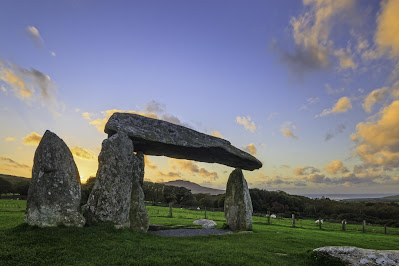The Ring of Brodgar (or Brogar, or Ring o' Brodgar) is a Neolithic henge and stone circle about 6 miles north-east of Stromness on Mainland, the largest island in Orkney in Scotland. It is part of the UNESCO World Heritage Site known as the Heart of Neolithic Orkney. These enigmatic stones are one of the most spectacular prehistoric monuments in the British Isles. The Ring of Brodgar Stone Circle and Henge is an enormous ceremonial site in the dating back to the 3rd millennium BC. The Ring of Brodgar comprises:
A massive stone circle, originally consisting of 60 stones – 36 survive today
At least 13 prehistoric burial mounds
A large rock-cut ditch surrounding the stone circle
The Scottish geologist Hugh Miller, visiting in 1846, wrote that the stones ‘look like an assemblage of ancient druids, mysteriously stern and invincibly silent and shaggy’.
Access at the Ring of Brodgar, especially to the inner ring, poses conservation issues. Site management has included periods of partial site closure, required to allow areas of footpath to recover.




